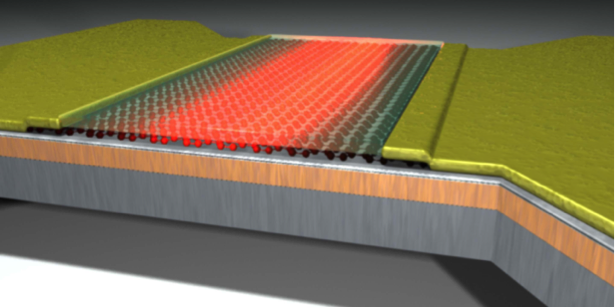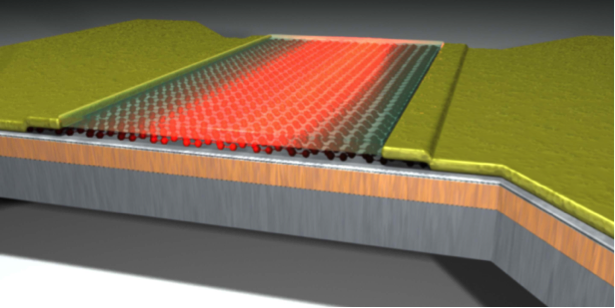Electrons in Graphene Beat the Heat
Among the many possible applications for graphene are sensitive optical detectors, called bolometers, that respond directly to heating of electrons by light. The extreme stiffness and low density of the two-dimensional carbon sheet make its internal vibrations unusual and only very slowly warmed by nearby electrons, which should make it easier to heat the electrons alone. In Physical Review Letters, Andreas Betz, of the Laboratoire Pierre Aigrain (ENS-CNRS) in France, and colleagues report painstaking measurements of the vibrational warming.
Like many other materials, graphene has two different types of vibrational waves. Higher-energy waves involve neighboring atoms moving in different directions. These “optical” vibrations ultimately limit the extraordinary acceleration of electrons in graphene. But gently heated electrons don’t have enough energy to create these vibrations. Instead, they have to share their energy with “acoustic” vibrational modes, in which nearby atoms all move in synchrony, as in ordinary sound waves. To explore this slow energy sharing, the researchers wired up special single-layer graphene samples and cooled them to the temperature of liquid helium. They then measured how the electrical noise at microwave frequencies varied as they heated the electrons with a steady current. The noise indicated that the electron temperature rose as the fourth root of the injected electrical power, as expected for sharing with two-dimensional vibrations. But the overall leakage rate from electrons to vibrations was only about a tenth of the expected value, a difference the researchers attribute to imperfections in the film. – Don Monroe





